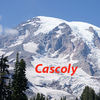Right angle “lens”
Mar 10, 2019 15:17:11 #
Fotoartist wrote:
I had a Spiratone version back in the last century. When I would see people looking at me through it I always wondered if they figured out what I was doing. I felt a little creepy doing it. Is using this device a dishonest intrusion of sorts?
yes, if the people would not otherwise consent to having their pictures taken - I always try to make eye contact first and indicate i'd like to take a picture. eg, in morocco recently most people in the markets would let you take pictures of their stalls but not of them.
Mar 14, 2019 14:49:28 #
Bower 37mm Right Angle Mirror Lens Attachment
https://www.bhphotovideo.com/c/product/464906-REG/
I haven't actually seen one in decades but I do not recall the image quality was breathtaking. YMMV
https://www.bhphotovideo.com/c/product/464906-REG/
I haven't actually seen one in decades but I do not recall the image quality was breathtaking. YMMV
Mar 14, 2019 18:20:38 #
Bipod wrote:
Paul Strand used one. He made one, then later bo... (show quote)
Close to the front as possible, yes.
What that really gets you is closer
to the optical center. That is your
real goal. And that means a prime,
normal or short tele, is ideal. Long
teles will also work. Zooms have a
lot of extra physical length ahead
of their true optical center, so they
are not the best choice. Obviously
some zooms WILL work.
Have fun hand holding the thing.
It will defy your eye-hand instinct
but a little practice helps.
.
Mar 15, 2019 01:01:10 #
User ID wrote:
Close to the front as possible, yes. br What that... (show quote)
The reason I cautioned against adding length before the
right-angle attachment is angle-of-view: to avoid
encroaching on the edges of the frame.
So for that reason, closer to the lens node is better,
and a wide-angle lens probably won't work.
Mar 15, 2019 07:18:25 #
Another technique for doing candid street photography is to use a wide angle lens, get close to your subject, and compose with the subject off center, and it looks to them like you are shooting something beyond them, as the camera isn't pointed straight at them.
Mar 16, 2019 13:55:23 #
Black body cameras get noticed less than shiney ones. Some street photographers
used to put black electrical tape over the chrome--but that turns into a mess.
Nikon makes a camoflage-colored Coolpix, Aw120, but unfortuantely it's woodland
camaflage and not even a flat finish:
https://www.bonjourlife.com/wp-content/uploads/2014/02/Nikon-Coolpix-Aw120-Camouflage-Camera-1.jpg
In urban street photography, one is usually too close to people for any camoflage to help much.
Probably the most practical solution when wearing a camera around one's neck is to wear a shirt
the same color as the camera and camera strap. Unfortunately, when the camera is lifted to the
eye, it presents a classic "photographer!" silouette. Here's where you have to hope you are
standing in front of a confusing background.
In rural areas it's different. I have a a few custom camoflaged trail camera installations. The trick
to camaflage is to disrupt shape and outline. This is accomplished by lightening shadowed areas
and interrupting straight lines and sharp edges. (Also, there must be no reflective surfaces and
no fluorescent dyes ("brighteners") in fabric.)
The following resources may be helpful:
US Army FM 21-76: Surival Manual; Chapter 21: Camoflage. Summarized:
https://www.armystudyguide.com/content/army_board_study_guide_topics/camo_and_concealment/personal-camouflage-from-.shtml
US Army FM 20-3: Concealment, Camoflage and Decoys. Summarized:
https://www.armystudyguide.com/content/army_board_study_guide_topics/camo_and_concealment/camo-and-concealment-stud.shtml
used to put black electrical tape over the chrome--but that turns into a mess.
Nikon makes a camoflage-colored Coolpix, Aw120, but unfortuantely it's woodland
camaflage and not even a flat finish:
https://www.bonjourlife.com/wp-content/uploads/2014/02/Nikon-Coolpix-Aw120-Camouflage-Camera-1.jpg
In urban street photography, one is usually too close to people for any camoflage to help much.
Probably the most practical solution when wearing a camera around one's neck is to wear a shirt
the same color as the camera and camera strap. Unfortunately, when the camera is lifted to the
eye, it presents a classic "photographer!" silouette. Here's where you have to hope you are
standing in front of a confusing background.
In rural areas it's different. I have a a few custom camoflaged trail camera installations. The trick
to camaflage is to disrupt shape and outline. This is accomplished by lightening shadowed areas
and interrupting straight lines and sharp edges. (Also, there must be no reflective surfaces and
no fluorescent dyes ("brighteners") in fabric.)
The following resources may be helpful:
US Army FM 21-76: Surival Manual; Chapter 21: Camoflage. Summarized:
https://www.armystudyguide.com/content/army_board_study_guide_topics/camo_and_concealment/personal-camouflage-from-.shtml
US Army FM 20-3: Concealment, Camoflage and Decoys. Summarized:
https://www.armystudyguide.com/content/army_board_study_guide_topics/camo_and_concealment/camo-and-concealment-stud.shtml
If you want to reply, then register here. Registration is free and your account is created instantly, so you can post right away.


